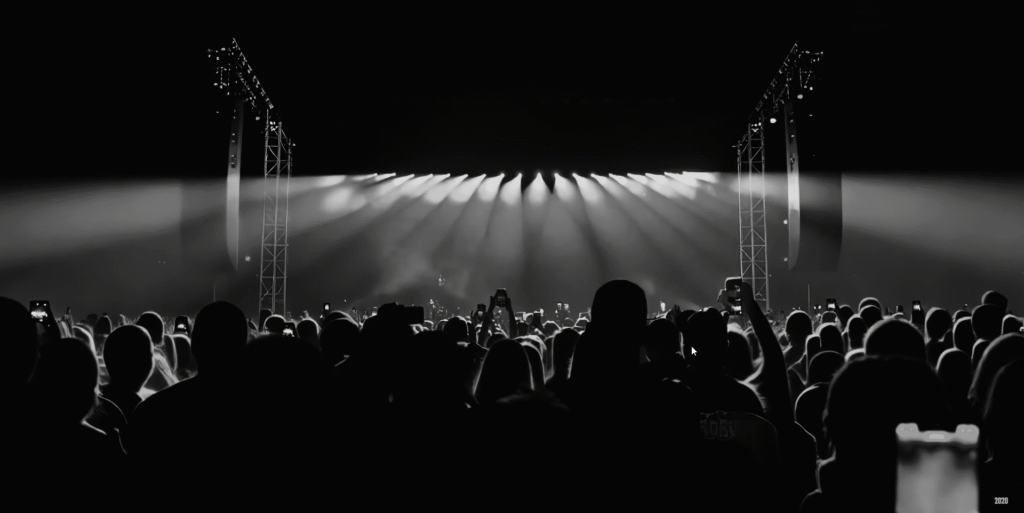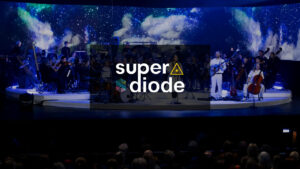
We sat down with Jakub, Gwidon and Szymon from Mech Creative to talk about their studio, their work, emerging trends and technologies they encounter and their experience in switching to LightAct as their main media server platform.
It was a lot of fun and very informative!
"LightAct is an easy-to-use software."
Jakub Czarnik
Mech Creative

Can you say a few words about your studio and how you started?
Gwidon Wydrzyński: We started the studio with Szymon a few years ago. To be honest, I don’t actually recall the exact year.
Szymon Płotkowski: I believe it was 2018, and we began under a different brand. However, three or four years ago, we rebranded to Mech Creative.
Gwidon: In the beginning it was just the two of us with Szymon, but in 2020 Jakub joined our company and he’s now one of the key people in the company.
How did the three of you get involved in the live events?
Gwidon: We all came into live events through different routes. I personally come from the theater.
Jakub Czarnik: I was practically born into the industry. My father is one of the distributors in the Polish market. So, you could say I started quite early – I made my first cuelist when I was four!
Szymon: As for me, I started as a technician at a large Polish company, working on festivals, television shows, and the like. Then I moved to Green Beam Design and worked there for about three years. It was at one of the festivals we did that I met Gwidon, and that’s how we started.
Gwidon: Yes, it started in a really weird way actually, but we can’t talk about that. Let’s just say that the party was rough! (laughs)
"Having a software-only option was really useful for some smaller concerts."
Szymon Płotkowski
Mech Creative
What kind of work do you do?
Gwidon: We work with all kinds of music and concerts. I personally also try to stay involved with theaters. We handle events too, like the Night Embassy event for Jägermeister in Poland. For that, we transformed several spaces within the Palace of Culture and Science in Warsaw to create a club-like atmosphere.
Szymon: To be honest, we haven’t cut anything out from the work we did before we started with Mech Creative. I still work for television, and Jakub is also a consultant to several manufacturers of lighting fixtures. We operate as Mech Creative, but at the same time, we continue all the work we’ve done previously.
Jakub: Exactly. We continue all our past work but as Mech Creative, we tackle festivals, events, and concerts spanning all genres—from electronic to hip-hop, pop, and rock. Basically, everything you can imagine.
Szymon: Because we want to have as much say as possible in the visuals of our projects. So we try to assist with multimedia, production, scenography, and set design.
Gwidon: I think you could say we strive to be the art directors for our concerts, tours, and events.
Jakub: Yes, we even create some of the content and design some of the scenography ourselves. We don’t do it manually, of course, but we can handle it all. It depends on the project’s needs, as they vary, but we’re capable of doing everything, and we do!

You recently started using LightAct in your productions. How did you come to this decision?
Szymon: I was looking for a different way to use Notch blocks in a concert. And I was looking at the Notch site and found a list of softwares that supported Notch blocks. LightAct was of course on that list. I contacted you, you gave me a two-week license, I reprogrammed everything in LightAct, everything went well, and that’s how we started using it.
Gwidon: We like to break the walls and do something different. We like new solutions; we really love new technologies and all that stuff. I think Jakub is the best of us at developing and searching for new technologies and finding answers to all our questions about how to do things differently.
Jakub: Yeah, we’re looking for the right tools for a job, let’s say. So, for every job, we’re looking for solutions that will fit the best. And that’s why we are here with LightAct as well.
"We love that we can get direct support from LightAct technicians."
Gwidon Wydrzyński
Mech Creative

You’ve been using LightAct for 2 years now. How do you like it so far?
Jakub: We’ve done quite a few shows with LightAct over the past two years. Last year, we used it for Oki’s tour. At the beginning of this year, we worked on the Genzie tour. We also finished a show with Kuban at Torwar hall in Warsaw using it. It went quite smoothly; LightAct is an easy-to-use software.
The node-based layers are incredibly intuitive for us because we build exactly what we need. At the same time, we don’t end up with eight universes of layers in our lighting console if we have simple needs for a show. Sometimes we just need a dimmer and the play state of a layer, and that’s it. Other times, we need a lot of functions, and LightAct gives us the flexibility to use all of them.
Szymon: And of course, we used a dedicated server for some productions, but there was a day when we had two concerts, and one of them was run on one of our computers. So, having the possibility to do that is also a good thing.
"The node-based layers are incredibly intuitive for us because we can build exactly what we need."
Jakub Czarnik
Mech Creative
What I noticed is that you are very independent. You do all these shows and there is not a single support request coming from you. How did you manage to achieve that?
Szymon: That’s also because we’re quite busy!
Gwidon: Yes, but you know, support is something we appreciate very much. We love to be in touch with technicians and get support directly from the producer of the software.
Jakub: It’s always good to talk with the people who actually make the software, unlike some other companies where a feature request just goes nowhere. That’s a nice thing. Every time we have any needs, I just drop you a message on Discord, and it’s usually solved quite fast. It depends on the idea, but all the things we need are in the software right now, so we’re happy with it.
What do you see as an emerging trend?
Szymon: I’m not sure if you want to hear this, but we’re seeing a return to analog scenography, with LED screens potentially integrated within it. All the augmented reality and virtual reality stuff? I think that’s becoming a thing of the past.
Gwidon: Yes, actually, you’re right. That’s a challenging question for us!
Jakub: It’s not bad, though, because I think content is becoming much more interactive with the whole scene and scenery. That’s the direction I believe everything is heading. Internationally, you see many shows using tracking of kinetic trusses and similar elements, which are integrated with LED screens and their content. I think that’s a really cool direction.
Gwidon: Yes, that’s a really cool way. But I guess those are actually the two main popular directions things are going in.
Jakub: I think they can be merged together.
Szymon: Perhaps we should distinguish between the Polish market and the world market. On the Polish market, we’re finding that big LED screens are becoming boring, and people are tired of them. Meanwhile, globally, you have massive screens, like for Adele’s concerts in Munich last year. But in Poland, we’re increasingly using physical sets, with less content and fewer LED screens. I think we’re getting back to a balance, because for the last few years, it was unbalanced, with too many LED screens.
Gwidon: Yes, every concert was about the visuals and the big LED screens in the back. But in Poland, there’s often no money for developing technologies to do things like in the international market, as Jakub mentioned—reactive content with kinetics and similar elements. There are no budgets for that, even on big tours or festival tours.
Jakub: I think time is what’s missing.
Gwidon: Time and budget, I guess. It’s super time-consuming.
Szymon: We’re ready to implement tracking in our shows, but there hasn’t been an event with the budget and time to actually use LightAct for tracking.
Jakub: So, that’s the issue we’re facing right now. If we have a show with some kind of budget that allows us to use creative stuff like kinetics, we often don’t have the time to actually integrate it with generative content that can use data from any system. That’s the issue. For Męskie Granie, for instance, we get final tracks a week before the festival starts, and we need to produce all the content and program video and lighting in that week. It’s a nightmare.
Gwidon: Yes, it’s really hard stuff to do. So, it’s about the money, about the time.
That’s the Polish market. Welcome.




